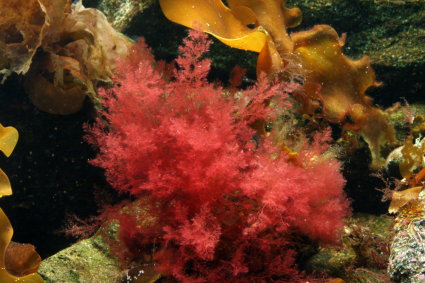Red Algae - Definition, Glossary, Details - Oilgae
Marine algae in which the chlorophyll is masked by a red or purplish pigment; source of agar and carrageenan - Source
The red algae (Rhodophyta, , from Greek: (rhodon) = rose + (phyton) = plant, thus red plant) are a large group, about 5000 - 6000 species - Source
Many of the coralline algae, which secrete calcium carbonate and play a major role in building coral reefs, belong here. Red algae such as dulse (Palmaria palmata) and laver (nori/gim) are a traditional part of European and Asian cuisine and are used to make other products like agar, carrageenans and other food additives. Source
Red algae are red because of the presence of the pigment phycoerythrin; this pigment reflects red light and absorbs blue light. Because blue light penetrates water to a greater depth than light of longer wavelengths, these pigments allow red algae to photosynthesize and live at somewhat greater depths than most other "algae". Some rhodophytes have very little phycoerythrin, and may appear green or bluish from the chlorophyll and other pigments present in them. Source
Links
Control of Red Algae in the Freshwater Aquarium:
Ultraviolet sunscreen compounds in epiphytic red algae from mangroves.







